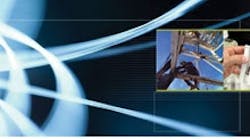Closed-loop motion designs in aerospace, semiconductor, automotive, military, and medical manufacturing, as well as oil-and-gas exploration and production, require repeatable and reliable measurement of linear and rotary motion and position. Most typically monitored is the relative motion of kinematically linked components, as in shaft and piston translations, gear and wheel rotations, and joint pivots. Applications can be as small as miniaturized camera-focus modules for biometric identification (as in the M3-F from Newscale Technologies, Victor, N.Y.) to the motion controls for large CNC gantry-type coordinate measuring machines.
Existing sensor designs
Contact linear and rotary motion sensing includes potentiometers and mechanical proximity switches.
In contrast, noncontact sensors utilize optical or laser, magnetostrictive, capacitive, inductive, and ultrasonic technologies.
Benefits of noncontact technologies include long life and high reliability due to limited component wear and degradation; mitigation of damage resulting from workpiece contact; and the option for sensor encapsulation or potting. Accuracy is also high, though some noncontact sensor types can be costly to purchase and install. Hall sensors are one option to extract high accuracy from the design at lower cost.
Hall sensor operation and next-generation magnets
Already proven in myriad designs, Hall sensors measure linear and rotary motion with a Hall sensor attached to one machinery subcomponent, and a magnet attached another. As their relative (linear or rotary) position changes with the machine’s movements, so does the induced voltage across the Hall sensor.
The induced voltage has three key characteristics: Its strength is proportional to the strength of the current and magnetic field through the conductor. Change in the induced voltage with changes in the current and field strength is repeatable. Finally, this phenomenon is measurable.
One Hall sensor limitation is restricted range and accuracy due to limitations in the magnetic field of traditional North-and-South bipole magnets either axially or diametrically magnetized. Beyond a 15 to 20-mm gap between Hall sensor and magnet, the field strength typically drops below the minimum for proper sensor operation.
Increasing Hall-sensor linear-measurement distance and accuracy requires more precise pole lengths. To this end, new multipole magnets offer sufficient field strength in a continuous pattern of repeating North and South poles.
The magnet’s flexible ferrite material can be magnetized to sufficient field strength to meet the Hall-sensor requirements, allow numerous lengths as required by the enduser (to 5,000 mm or longer), and are magnetized in a way that ensures accurate pole lengths.
One caveat: Cutting the magnet to length is possible, though does induce physical distortion that degrades the magnetic profile of the first few pole pairs.
The magnets are installed with pressure-sensitive adhesive applied to the nonmagnetized side for mounting to myriad machinery surfaces.
Multipole magnets make a good match for new noncontact high-resolution magnetic encoders for accurate linear and off-axis rotary sensing. These sensors (developed by Austriamicrosystems, Raleigh) offer measurement resolution better than 0.5 µm, and multipole magnets (in strip or ring form) with specific pole lengths (ranging from 1.0 to 2.0 mm) are required for these sensors to operate properly.
For more information, visit dextermag.com.
Testing mulitpole Hall-sensor magnets
Verifying accuracy better than 40 µm requires a custom test fixture. In a 1.0-mm pole-length setup, a test magnet is mounted on a platform 0.5-mm below a Hall sensor on a carriage moved linearly via a stepper motor. A Renishaw optical encoder RGS20-S linear scale with 20-µm graduations on the testing base plus an RGH24 readhead (with 50-nm resolution) precisely track the platform and magnet-sample movement along the linear scale.
A high-resolution AMS NSE5310 Hall-sensor-based linear encoder measures the test-magnet's field and linear position with resolution to 0.488 µm per step -- 12 bit (4096) over a 2.0-mm pole pair. Future investigations will use a stand fitted with other linear magnetic encoders to allow testing of other pole lengths.






